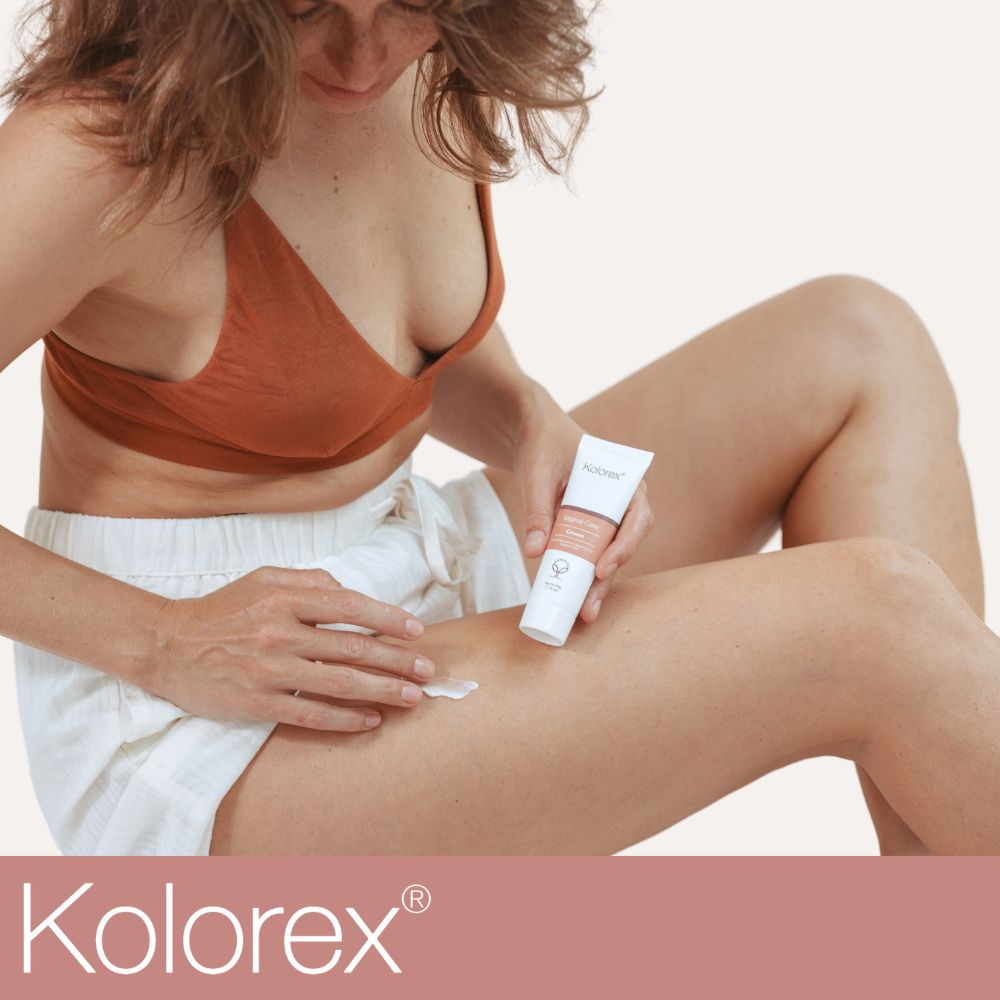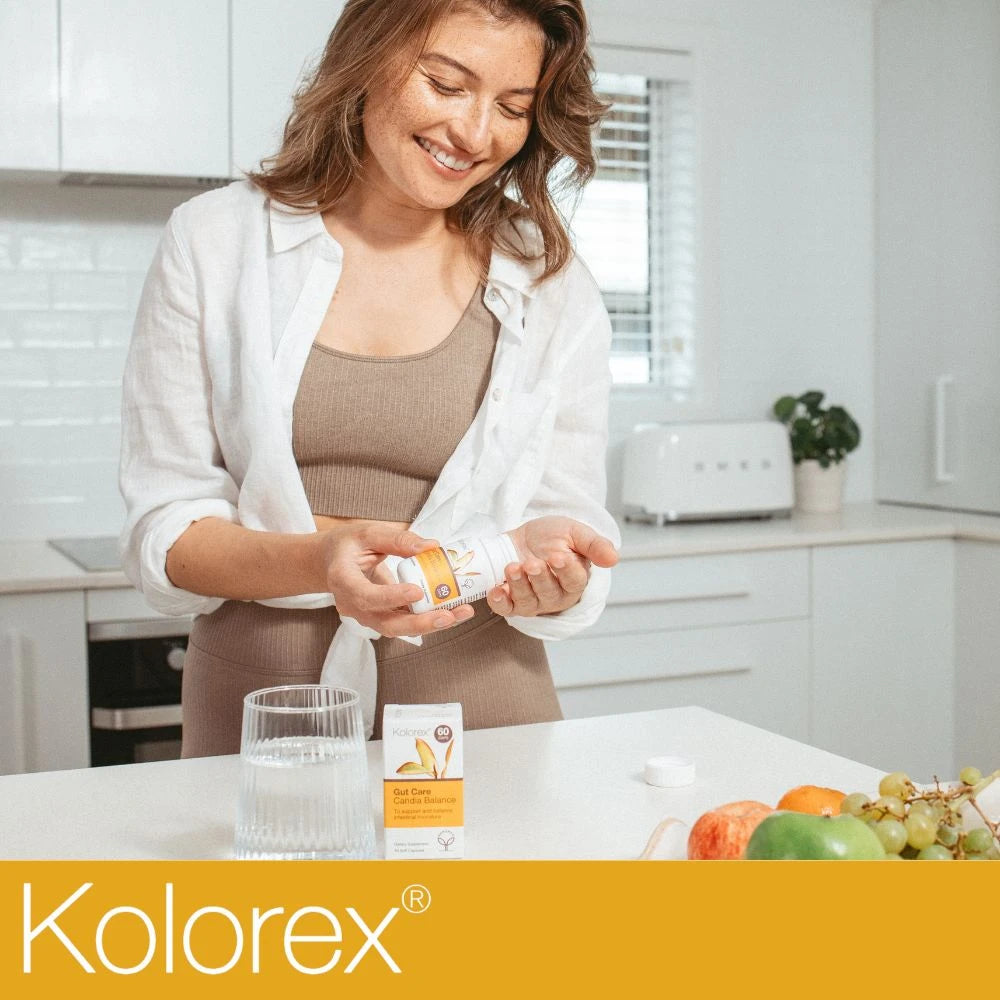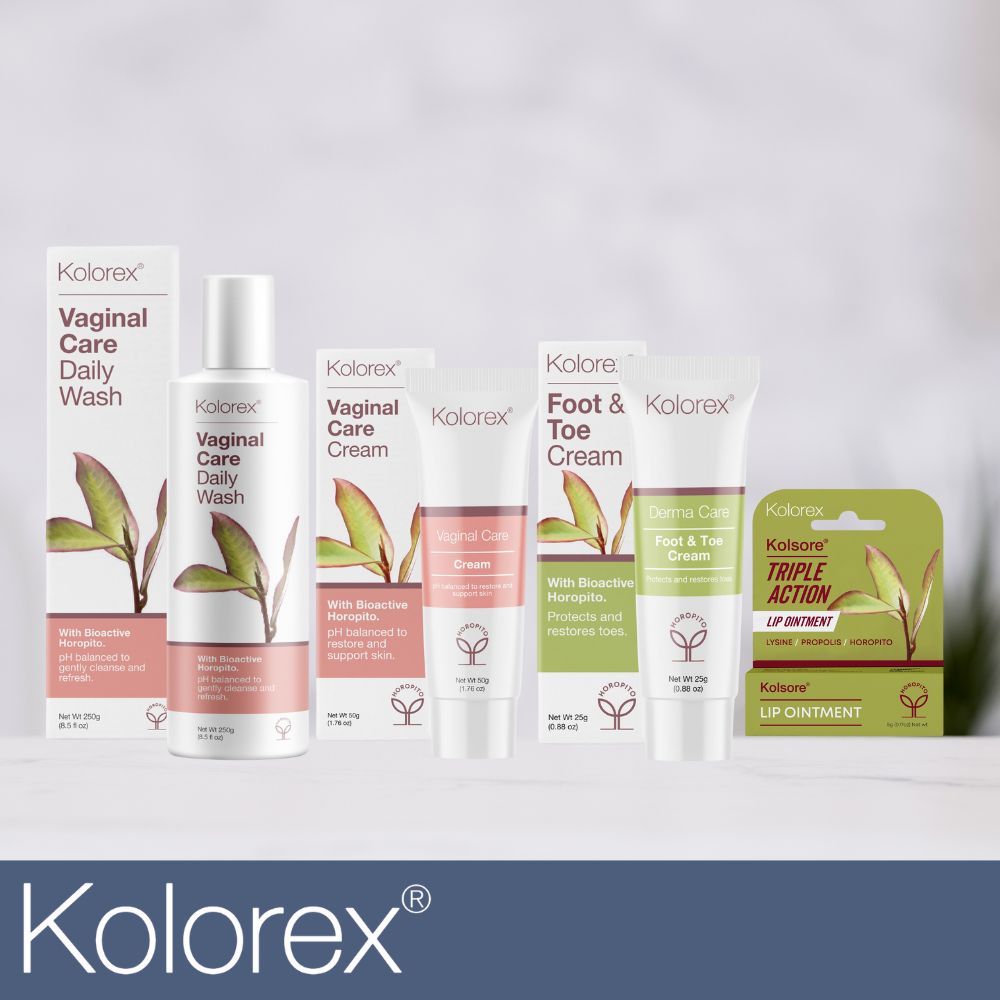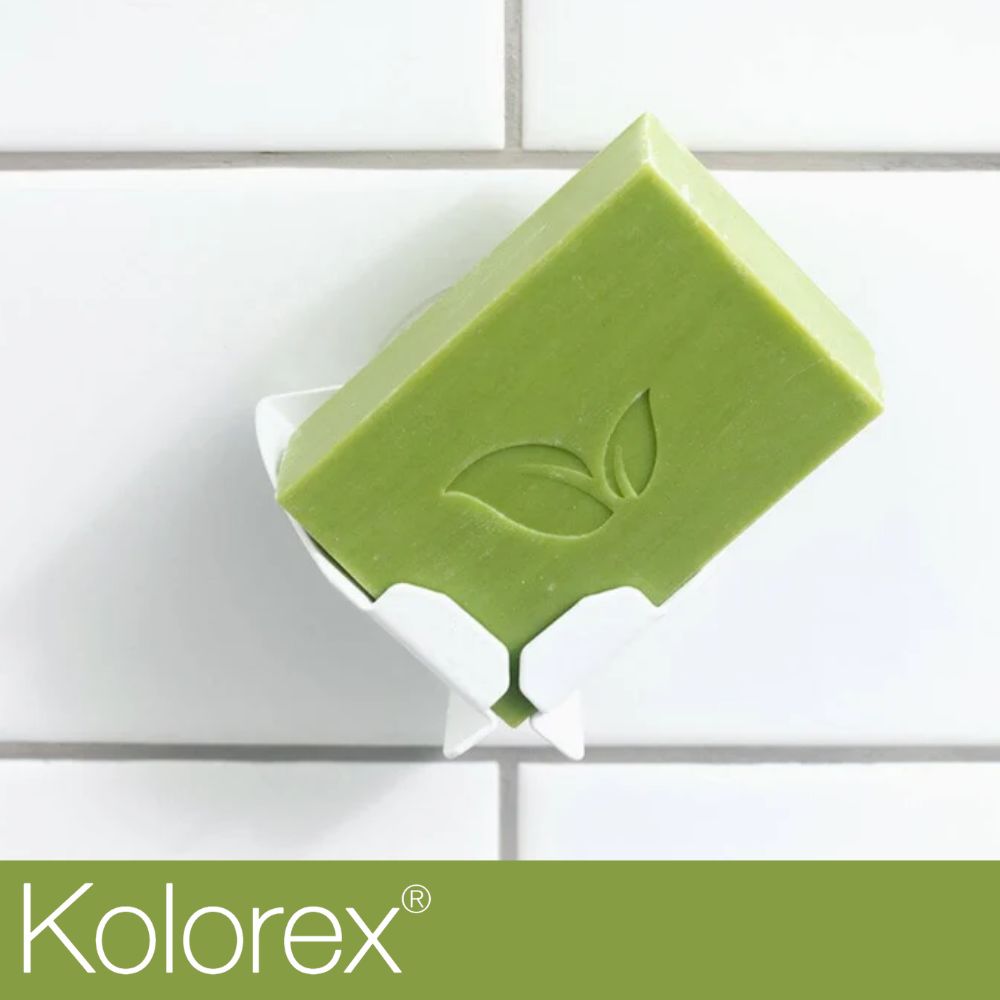By Kolorex Inhouse Naturopath Chloe Chivers
The uncomfortable, often unspoken truth….. Men Suffer Yeast Overgrowth too.
The uncomfortable issues around sexual wellness and intimate health concerns are not easy to discuss with or about men; and understanding how yeast overgrowth develops and affects men, we can help educate clients around solutions & prevention for candidiasis.
Yeast overgrowth caused by Candida albicans was first documented by a man. Bernhard von Langenbeck published the first description of a fungus in 1839. He discovered that although Candida albicans exists naturally on the skin, it had the potential to become an aetiological agent1
Candida being an opportunist fungus, may take advantage of an impaired immune system both locally (e.g., skin of the penis) or systematically. Candida transitions to a pathogenic phase, causing fungal cells to produce hyphae, when there’s a shift in the host environment that encourages yeast growth. Although Candida albicans remains the most frequently isolated fungus of candidiasis, other fungal strains can be problematic too.2,3
Yeast Infections in Men: Causes
Candidiasis is caused by a variety of factors3:
- Poor hygiene (one of the most common causes4)
- Frequent washing with soaps and using product containing topical allergens
- Not keeping genital area clean and dry
- Poorly managed blood sugar levels, poor diet or overweight
- Impaired /weakened immune system
- Taking medications that suppress the immune system
- Gut dysbiosis – loss of microbial biodiversity & altered bowel flora
- Prolonged antibiotic use
- Studies show that men who are not circumcised are more likely to develop Candida balanitis.4
Are yeast infections sexually transmitted?
Genital candidiasis isn’t considered a sexually transmitted infection (STI) as it can develop without sexual contact. A partner with a yeast infection does not always transmit it. However, people should avoid unprotected sex with a partner who has thrush until the infection has cleared.5
Yeast Infections in Men: Signs and Symptoms
Unlike vaginal yeast infections in women, men may often not experience symptoms but when symptoms do appear, a yeast infection may cause extreme discomfort and a painful rash referred to as thrush, candida balanitis, candidiasis or moniliasis.
In men, yeast overgrowth generally affects the end of the penis, called the glans. It can also affect the foreskin and extend to the perianal & groin regions. Symptoms of a local yeast infection in men include4:
- mild burning
- pruritis/itchy rash
- swelling and tenderness
- redness of the skin
- blistering and pustules
- moist curd-like dischargw
- Pain when urinating, during sex and when pulling back the foreskin
Note: Candidiasis is not the same as Tinea Cruris (jock itch), which is another type of fungal infection that also causes irritation & itching in the genital area. Tinea Cruris is most often caused by Trichophyton rubrum6
Yeast Infections in Men: Solutions
It’s important to look at various resolutions for men and consider overgrowth in the digestive tract, as there is increasing evidence the gastrointestinal tract is the main source of disseminated C. albicans infections7.
Personal hygiene & topical applications – As yeast is more likely to thrive in warm, moist conditions, it’s important to keep the genital areas as clean and dry as possible. Men should take care to keep the penis clean by washing it carefully in warm running water, with a gentle ph Wash formulated for the delicate skin of the penis, then drying the penis gently and thoroughly8. A derma cream may also be applied daily to bring the skin’s natural microbiome back into balance. Wearing loose and breathable cotton underwear may help to keep the genital area dry and cool.
Stress reduction – Exposure to stressors has long been known to increase vulnerability to infection in humans particular at the mucosal surfaces of the skin & digestive tract. Key chemical mediators of the stress response, namely adrenocorticotropic hormone (ACTH), glucocorticoids and catecholamines, directly impact susceptibility to yeast infections due to the suppressive effects on the immune system and the ability alter the gut microbiome and epithelial barrier function9. Managing stress with techniques like deep breathing and gentle exercise, taking adaptogenic and nervine herbal extracts and getting adequate sleep each night, are important considerations when balancing yeast overgrowth both locally and systemically. Listen to the Case Study 2 Male Subject Frequency / Stress
Balancing blood sugar – High sugar foods and refined carbohydrates can function like growth enhancers for candida and impacts microbial growth in the gut3. Disturbances of the gut bacteria/dysbiosis, are associated with enhanced candida albicans colonization7. Encouraging clients to maintain a healthy balanced diet with plenty of fresh vegetables, healthy fats and proteins and to hydrate with pure water, caffeine-free herbal teas and avoid alcohol, are crucial considerations. Elevations in blood sugar levels, either by way of diet or because of an underlying health concern like diabetes can leave men more susceptible to yeast infections. Case Study 3 Male/ High Blood Glucose Levels
Lactobacillus Probiotics –Recent studies are showing the potential usefulness of specific Lactobacillus strains such as Lactobacillus reuteri in the management of candidiasis, helping to reduce yeast biofilm development and slow down hyphal formation10.
Natural herbal solution - Horopito, Pseudowintera colorata, is a natural & effective solution for yeast infections in men such as Candida albicans. Horopito also known commonly as pepper tree, is an ancient & medicinal shrub endemic to New Zealand. Horopito has intelligently adapted and thrived in the damp, dark conditions of the rainforest by building up natural chemical defences to protect against the threatening forest fungi and other pathogens. The active constituent, polygodial, is what gives Horopito it’s hot and peppery taste and also its anti-fungal action.
Resent research on Horopito (Pseudowintera colorata) and its active constituent is the sesquiterpene dialdehyde, polygodial.1 Polygodial exhibits significant fungicidal activity, especially against Candida albicans.1,2,3 Polygodial’s primary mode of action is to selectively disrupt the permeability barrier of yeast cells, resulting in cell leakage and cell death.4
- McCallion RF et al. Antibiotic compounds from New Zealand plants, II:polygoidal, an anti-candida agent fromPseudowintera colorata. Planta Med 44:134 1982.
- Lee SHet al. In vitro antifungal susceptibilities of Candida albicans and other fungal pathogens to polygoidal, a sesquiterpene dialdehyde. Plant Med. 65:204-8. 1999.
- Calder VL, Cole AJL, Walker JRL. 1986. Antibiotic compounds from New Zealand plants III: A survey of some New Zealand plants for antibiotic substances.Trans Royal Soc NZ 16(2):169-181
- Taniguchi, M., Yano, Y., Tada, E., Ikenishi, K., Oi, S., Haraguchi, H., Hashimoto, K. & Kubo, I. (1988). Mode of Action of Polygodial, an Antifungal Sesquiterpene Dialdehyde. Agricultural and Biological Chemistry, 52(61), 1409–1414.
References
- Knoke M, Bernhardt H. The first description of an oesophageal candidosis by Bernhard von Langenbeck in 1839. Mycoses. 2006 Jul;49(4):283-7. doi: 10.1111/j.1439-0507.2006.01237.x. PMID: 16784441.
- Papon N, Courdavault V, Clastre M, Bennett RJ. Emerging and emerged pathogenic Candida species: beyond the Candida albicans paradigm. PLoS Pathog. 2013;9(9):e1003550. doi: 10.1371/journal.ppat.1003550. Epub 2013 Sep 26. PMID: 24086128; PMCID: PMC3784480.
- Martins, N., Ferreira, I., Barros, L., Silva, S., & Henriques, M. (2014). Candidiasis: Predisposing Factors, Prevention, Diagnosis and Alternative Treatment. Mycopathologia, 177(6), 223-240.
- Morris BJ, Krieger JN. Penile Inflammatory Skin Disorders and the Preventive Role of Circumcision. Int J Prev Med. 2017 May 4;8:32. doi: 10.4103/ijpvm.IJPVM_377_16. PMID: 28567234; PMCID: PMC5439293.
- https://www.cdc.gov/std/treatment-guidelines/candidiasis.htm
- Pippin MM, Madden ML, Das M. Tinea Cruris. [Updated 2023 May 29]. In: StatPearls [Internet]. Treasure Island (FL): StatPearls Publishing; 2023 Jan-. Available from: https://www.ncbi.nlm.nih.gov/books/NBK554602/
- Basmaciyan L, Bon F, Paradis T, Lapaquette P, Dalle F. "Candida AlbicansInteractions With The Host: Crossing The Intestinal Epithelial Barrier". Tissue Barriers. 2019;7(2):1612661. doi:10.1080/21688370.2019.1612661
- https://shvic.org.au/for-you/genital-health/penis-hygiene
- Lyte M, Vulchanova L, Brown DR. Stress at the intestinal surface: catecholamines and mucosa-bacteria interactions. Cell Tissue Res. 2011 Jan;343(1):23-32. doi: 10.1007/s00441-010-1050-0. Epub 2010 Oct 13. PMID: 20941511.
- Rodnei Dennis Rossoni, Patrícia Pimentel de Barros, Janaina Araújo de Alvarenga, Felipe de Camargo Ribeiro, Marisol dos Santos Velloso, Beth Burgwyn Fuchs, Eleftherios Mylonakis, Antonio Olavo Cardoso Jorge & Juliana Campos Junqueira (2018) Antifungal activity of clinical Lactobacillusstrains against Candida albicans biofilms: identification of potential probiotic candidates to prevent oral candidiasis, Biofouling, 34:2, 212-225, DOI: 1080/08927014.2018.1425402








